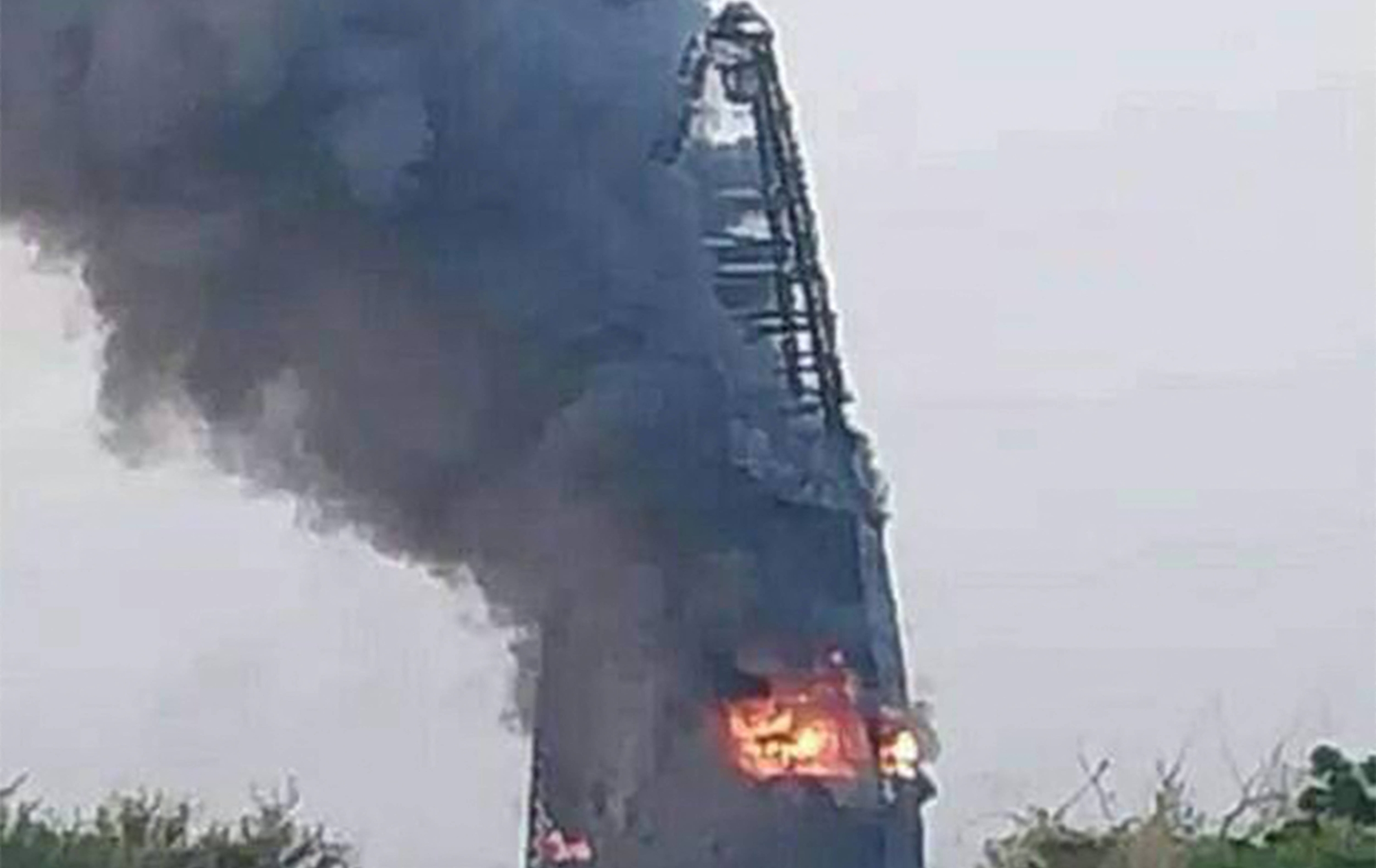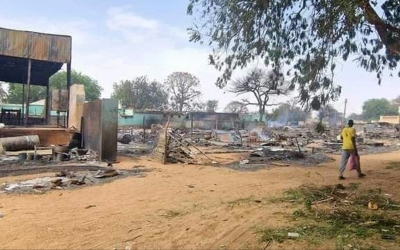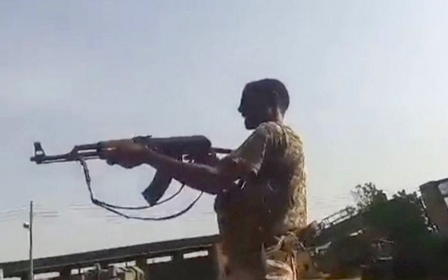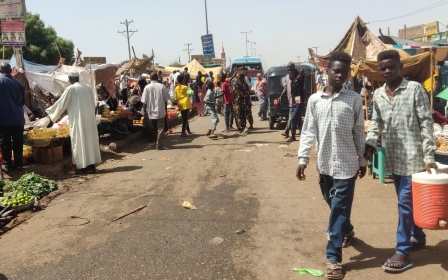Sudan: Key buildings in capital engulfed in flames as war enters sixth month

Landmark buildings in the Sudanese capital caught fire over the weekend as fighting between the military and powerful paramilitary forces entered its sixth month.
The Greater Nile Petroleum Oil Company Tower, one of the tallest buildings in Khartoum, was seen burning on Sunday morning as clashes raged between the Sudanese military and the Rapid Support Forces.
Online footage showed flames and clouds of dark smoke enveloping the 18-storey conical building with glass facades, located in the centre of the capital.
Other key buildings that have caught fire as a result of the fighting include the Ministry of Justice, on the western side of the army's defence perimeter, and the Standards and Metrology and Quality organisation buildings.
The military said on Saturday evening that it had repulsed a major assault on its headquarters, which had damaged or destroyed surrounding buildings.
New MEE newsletter: Jerusalem Dispatch
Sign up to get the latest insights and analysis on Israel-Palestine, alongside Turkey Unpacked and other MEE newsletters
Fighting in the area resumed on Sunday, with local media reporting that the paramilitary forces attacked the army headquarters for a second day in a row.
Battles were also reported in el-Obeid, a city 350km south of the capital, according to AFP.
According to Sudan War Monitor, a joint initiative of Sudanese and international journalists set up after the war started, both the army and the RSF have positioned snipers in tall buildings in the area around the military headquarters, making towers vulnerable to attacks.
Sudan has been ravaged by fighting since war erupted between chief Abdel Fattah al-Burhan and his former deputy, RSF commander Mohamed Hamdan Dagalo on 15 April.
The densely-populated capital has been turned into a war zone, and violence has raged in different parts of the country, notably in the Greater Khartoum area and in the western Darfur region.
Nearly 7,500 people have been killed in the war, according to a conservative estimate from the Armed Conflict Location and Event Data Project.
The real death toll is presumed to be much higher, with many of those wounded and killed never reaching hospitals or morgues.
Last week, at least 40 civilians were killed and dozens wounded in an army air strike on a market in southern Khartoum, marking the largest single-incident death toll since the war started.
In addition to the capital, the fighting has been concentrated mainly in the western region of Darfur, where violence linked to the RSF and its allies has prompted the International Criminal Court to open a new investigation into alleged war crimes.
Fighting in cities such as El Geneina has been catastrophic, with widespread killings, markets and homes looted, and women and girls targeted with sexual violence, Middle East Eye has previously reported.
On Wednesday, the outgoing UN special envoy for Sudan, Volker Perthes, said that 13 mass graves had been discovered around El Geneina.
Perthes said in his final speech to the UN Security Council that the violence in Darfur had "worsened dramatically", particularly at the hands of the RSF.
Over 2.6 million people have been displaced from their homes since the conflict began, looking for safety in different parts of Sudan as well as outside of the country, according to the UN.
Many of those fleeing the conflict are making their way on foot to neighbouring Chad, with more than 730,000 having fled to neighbouring countries.
Middle East Eye delivers independent and unrivalled coverage and analysis of the Middle East, North Africa and beyond. To learn more about republishing this content and the associated fees, please fill out this form. More about MEE can be found here.





